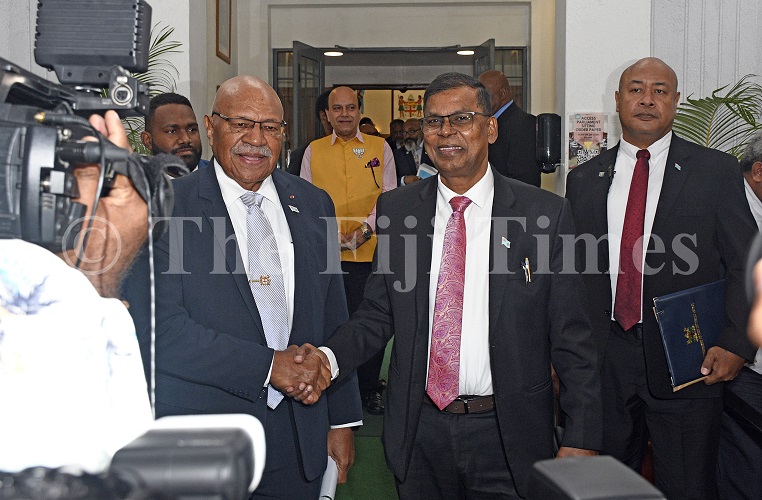An international team of scientists was in the country to study three vents spitting out hot fluids from the ocean bed in Northern Fiji waters, according to an article that was published in The Fiji Times on January 6, 1995.
The vents, which were called the ‘White Lady’ by French scientists who discovered them, were shooting out fluids with a temperature of 290 degrees Celsius.
“The team will study the process going on in the ocean field of this hydrothermal area,” said team leader Professor Peter Halbach, of Free University in Berlin.
Prof Halbach led the French-German undertaking with the team of 24 scientists from Germany, France, Belgium, Portugal, Greece and New Caledonia.
He said the White Lady was 180 miles North-northwest of Suva, well within the country’s exclusive economic zone.
New Caledonian scientist Jean-Marie Auzende was the deputy chief scientist.
Local marine biologist Cristelle Pratt, of the Department of Mineral Resources, was to also join the team for the three-week assignment.
Prof Halbach said the whole project had cost the German Ministry of Research and Technology $2.68million.
The cruise would be done on board the 100-metre long research vessel Sonne (German for sun) which arrived on this day.
The team left for the expedition on January 7.
The shooting of the hot fluids form the vents which met the cold ocean waters created a chimney from the ocean bed.
The sulphur oxidizing bacteria which were formed in the process of formed ecosystems.
The bacteria were eaten by crabs and shells which were eaten by fish and other bigger sea creatures.
Prof Halbach said the chimneys grew up to 10-12 metres in height during a lifespan up to 100 years of the continual shooting of the fluids.
He said the cruising was to be directed mainly at the studying the geochemical and biological process with the White Lady.
Prof Halbach said research had also shown in the past that the area consisted of massive sulphides, trace metals with copper and zinc and smaller traces of gold and silver.
He said their trip was purely scientific, using television photographic sledge, television graph systems, sensors, grabbing and coring systems to bring in samples.
The biology, geochemical and hard rock laboratories on board allowed the team to do studies immediately on board after getting samples.
Ms Pratt said the White Lady was discovered in 1989 using the French submersible Nautile.
The mother ship of the Nautile was the MV Nadir.
There had been 142 offshore geoscience cruises within Fiji’s exclusive economic zone from Australia, France, Germany, and New Zealand, Japan and the United States of America.
The team returned to Viti Levu on January 28.
The post Back in history | Scientists on fact-finding mission appeared first on The Fiji Times.





